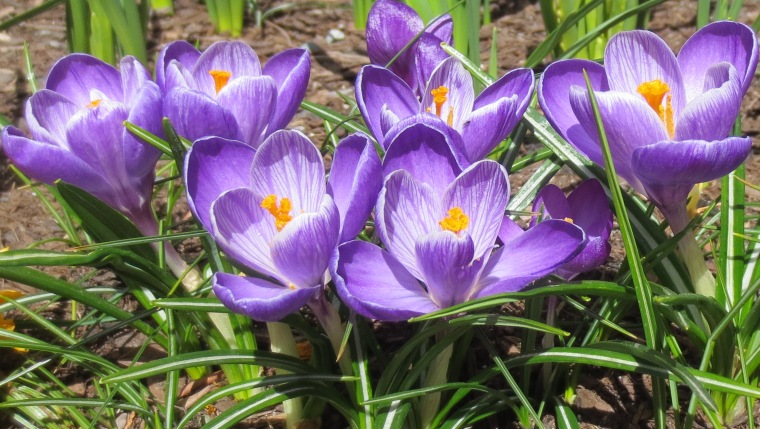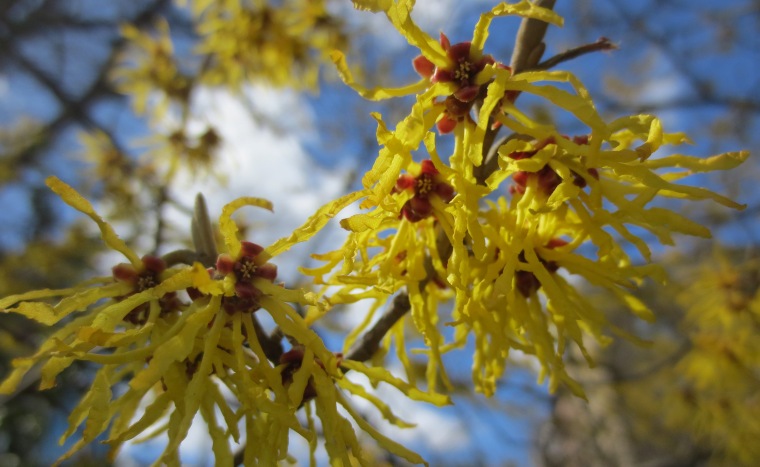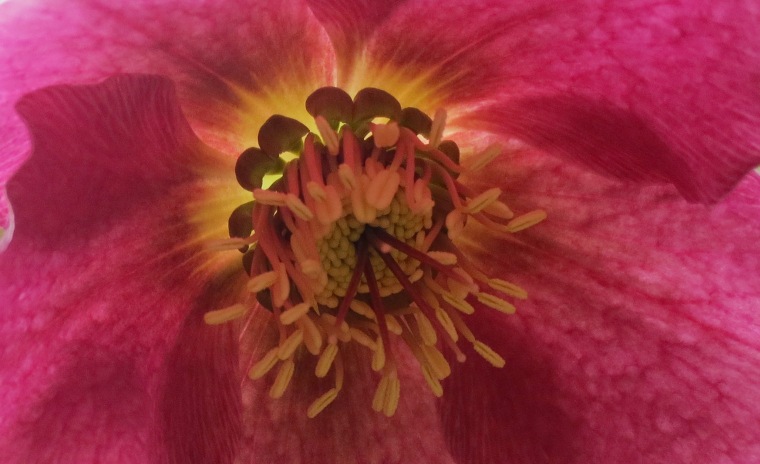This is the busy time in the garden, the time for the hardest work to prepare the way for the growing season. Like painting, much of gardening is about the preparation – of the soil, of the beds, of the pots – and if you stumble at the start it can be dangerously difficult to right things. On the other hand, a lot of gardening can be forgiving, in the resilience of plants, and their ability to spring back from even our most heinous acts of destruction and apathy. These are lessons everyone should learn.
After gardening at this house for over ten years, I have developed a rough system that works, somehow. This is the first time I have made a list of chores, divided roughly into the following tasks to do:
* Amend
* Prune
* Plant
* Revise
* Divide & Conquer
The Amending involves improving the soil around specific plants. This year, the new redbud (Cercis), the weeping larch, the Kwanzan cherry, the Ostrich ferns, and a Lady’s Slipper orchid all require a little extra pampering. In this case, it’s a bunch of shit. Cow shit. Bags and bags of manure are hauled in from Lowes and worked into the top of the soil surrounding said plants. I prefer this more organic product instead of the man-made fertilizers not only for its environmentally-friendly aspect, but also because it’s more difficult to overdose. Being that it’s mostly a top-dressing, there is little-to-no direct contact with the roots, resulting in no burn.
The Pruning is an ongoing task, but one that must be done delicately as pruning at the wrong time of the year can be disastrous. I am not in any way an expert on pruning, and wouldn’t dare advise on trees, but generally if the tree or shrub flowers, the best time to do so is immediately following the flowering. Which means not all of it can be done at this time of the year. In some cases, like the Japanese maples that are large enough to survive such haphazard hacking, I’ll go ahead and prune away at them any time of the year, but for things like the mockorange and lilacs, I’ll need to wait a bit. The most onerous pruning usually involves the hydrangeas – so many thick stems that need to be cut back individually, and then trying to extract all the fallen leaves from between those dense stalks. Good for the forearm though.
The Planting is the most fun part of the process, purchasing and implementing new friends in the hopes of finding the perfect plant for the perfect place. At this point in the garden, there’s not much room for more, and this year is more a time of cutting back and thinning out, as things have gotten a little too lush and grown in. However, there’s always room for something, and in this case I may try some Lilium among the Ostrich ferns, and pray the rodents don’t destroy them all. If that proves too difficult, there’s always container gardening – something I’ve never given proper attention to in the past. I never realized the impact that containers could have, especially on the patio. They may start out underwhelming, but if cared for correctly, the growth of annuals can be just as full as a five-year patch of any stalwart perennial, and often enough far more colorful.
The Revising is the problem-solving of the garden, done after a year or two of realizing something is not quite right, whether in the excessive growth of a dogwood, or the poor placement of a self-seeded spruce tree. Mostly the revising is about moving things, digging them up and putting them somewhere more fitting. Occasionally it’s about getting rid of something altogether – usually something overgrown or past its prime or usefulness. Sometimes that’s the hardest thing to face, and if at all possible I’ll try to pass a plant along to friends or family before getting rid of it, or plopping it into the more wild area of the backyard to let it fend for itself.
The Dividing and Conquering sounds the most challenging, and it often is. Particularly when certain plants have grown into unruly and extensive groups. Like the Miscanthus. The not-so-aptly nicknamed maiden grass can drive its roots down deep, and grow so tightly packed that only an ax, wielded with great force from high above, can hope to pass through its inextricably-woven system. I’m afraid the same will hold true for the several clumps of cup plants that have seeded themselves and taken over. A charming plant, it can also be overbearing and imposing if left to its own devices, towering up to ten feet, and supported by thick tuber-like roots. If I don’t put it in check now, it will be too late.
Finally, there is The Mulching. I only do a proper mulching every few years, mostly from laziness and partly from a judicial decision that yearly mulching is over-excessive and unnecessary. If it’s not broken down, there’s not always a need to mulch again. (Truth be told, only one year should be skipped in this manner, but I’ve stretched it into three. Sometimes four. Again, laziness.) This, unfortunately, is one of those years that can’t be skipped. Wish me, and my back, luck.
Back to Blog


